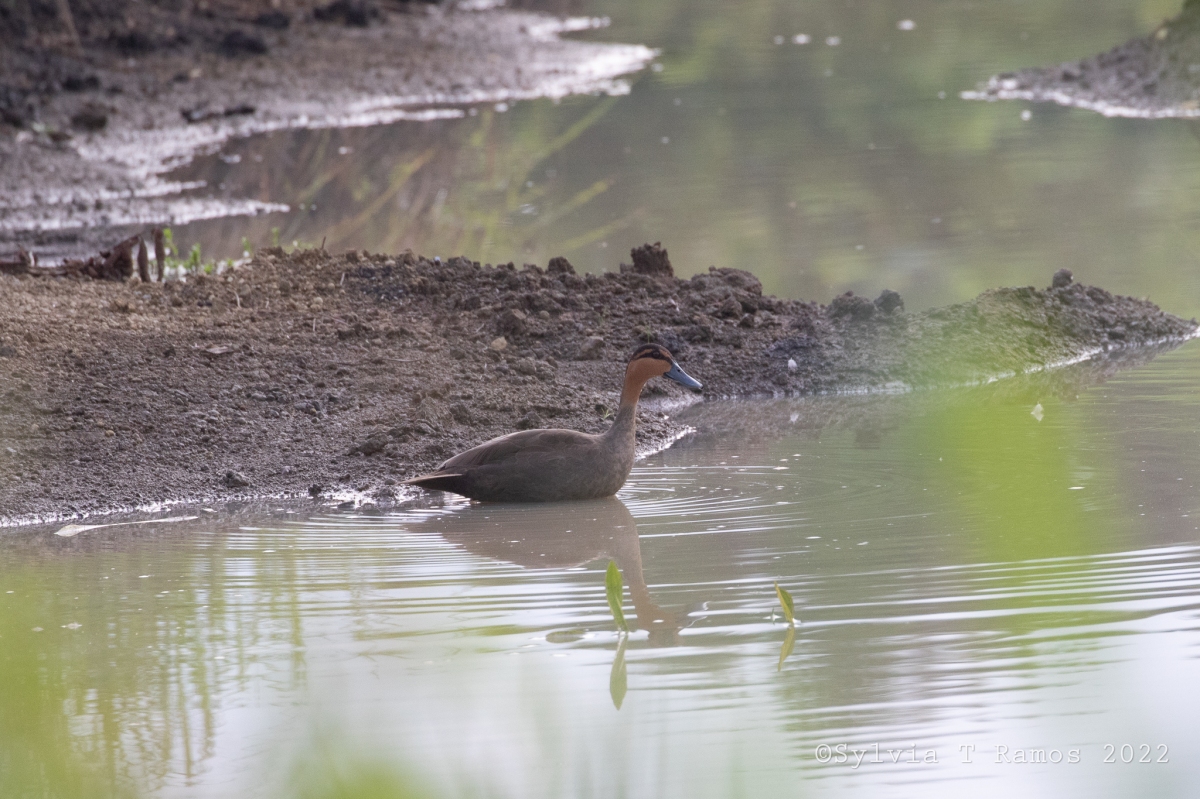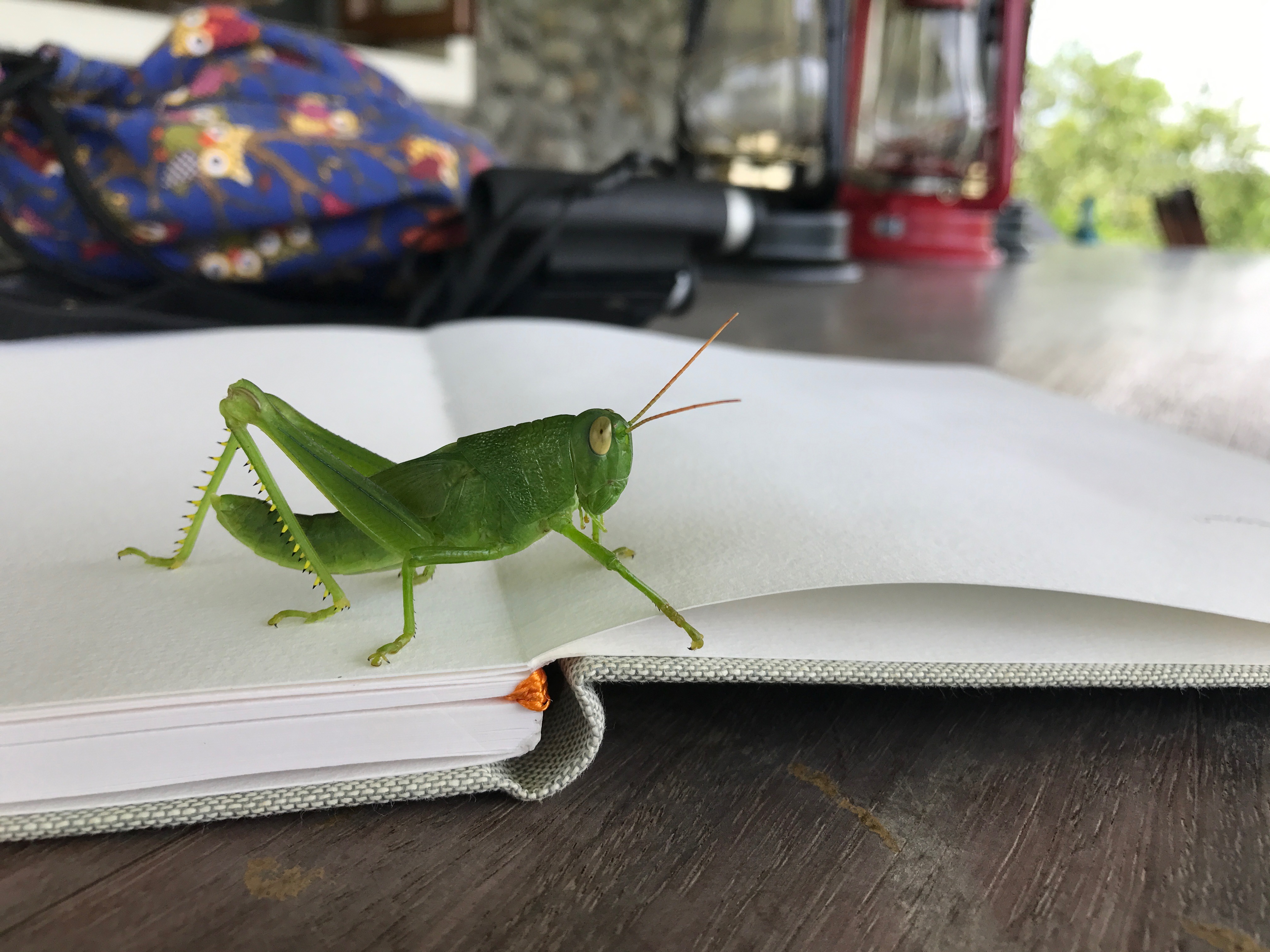MAY
Rainy season came early this year. The sanctuary was nice and green in May! This is very unusual for our area. The new pond looked like a big mud puddle. The dogs enjoyed it very much,

There were a lot of Binayuyu fruiting all over the sanctuary. The birds seem to be spreading the Binayuyu trees all over. When we bought our property, there was one big Binayuyu tree outside our old entrance. I thought it was such a pretty tree and that it was a shame that it was outside our property. Now we have many of them!
This is what was fruiting and flowering in May:









We were able to see and photograph the Asian Koel that we have been hearing so often. Tonji saw 3 of them in a Banato tree beside the dry creek. He was able to describe the location to me and I saw two of them.

JUNE
There was even more rain in June. There was water everywhere! There was water in the dry creek and in the old small ponds. There was enough water in the new pond to start planting water plants. I’m hoping the water plants provide enough shade to keep the pond cool and prevent too much water from evaporating. I hope this helps keep the water in the pond year round. We also added guppies, but I’m not so sure if they survived the heat of the water.
The dogs enjoyed all the water. They inspected every puddle that they saw. They waded in the new pond whenever they had a chance.



I brought Momo, Lulu, and Ollie with me to inspect the gully that goes around the property. That area usually looks like a dry creek bed. The rain transformed it into an exciting hike over mud with water crossings! It was so much fun to watch the dogs find their way through the trail. Especially Momo who had to do a lot of climbing and jumping! It reminded me of a mini version of the canyoneering trail we did in Moalboal many, many years ago with our young children. There portions where we had to jump into the water, swim across, then step on our guide Wolfgang’s shoulders to get out to the other side!





I also had good views of a Coleto. It’s great to see a bird that is usually associated with forests. I also got to photograph a Common Emerald Dove. We see them a lot in flight. They usually fly low enough to see and ID them, but too fast to photograph.


JULY
July was awesome! In July my pond dreams came true! I was able to walk up to the pond and watch ducks swimming around and walking! I got to watch the ducks hanging out! With our old ponds, it was more like if you walk up to the pond you won’t see anything until you are very close and then the ducks will get surprised and all fly away. It’s great that we have this bigger pond that we can see and appreciate even from afar.




Here are some other cooperative bird subjects!




The Balai Lamok beside the cottage finally has a lot of flowers. This tree received a lot of hype among the Philippine native tree enthusiasts. It was touted as the “Cherry tree of the Philippines. It became one of the most expensive and most desirable native trees, especially when people would post photos of mature trees in full flower. They looked amazing. We also bought into the hype, but our trees have only produced one or two flowers at a time. This tree beside the cottage was given to us by a friend. This is the first time we’ve seen it flower this much!

The Philippine Teak beside the cottage also has flowers!

More interesting trees:





AUGUST
One side of the new pond developed a leak. Thankfully, it was repaired and the pond is still retaining water. Crossing my fingers that the water holds out during summer. Tonji also said that he will be doing some repairs to the big pond in summer. I hope the plants survive all of that! I am also hoping he also has time to build more ponds.
I sewed 500 flags for marking all the new trees being planted this year. We started planting some of the Malabulak seedlings. They are quite tall already and are starting to form thorns on their trunks.
I am enjoying propagating water plants in Alabang and planting them at the farm. The water lilies and other water plants are doing better at the farm than they were back in Alabang. They must like being planted straight into the ground and receiving full sunlight. I also improved my water plant transportation technique. I now put them in ziplock bags. I reuse the bags.






I developed COVID symptoms while we were at the farm. Tonji had to force me to go home so I could test myself properly and rest. I am ok now and looking forward to what the next months bring!
















